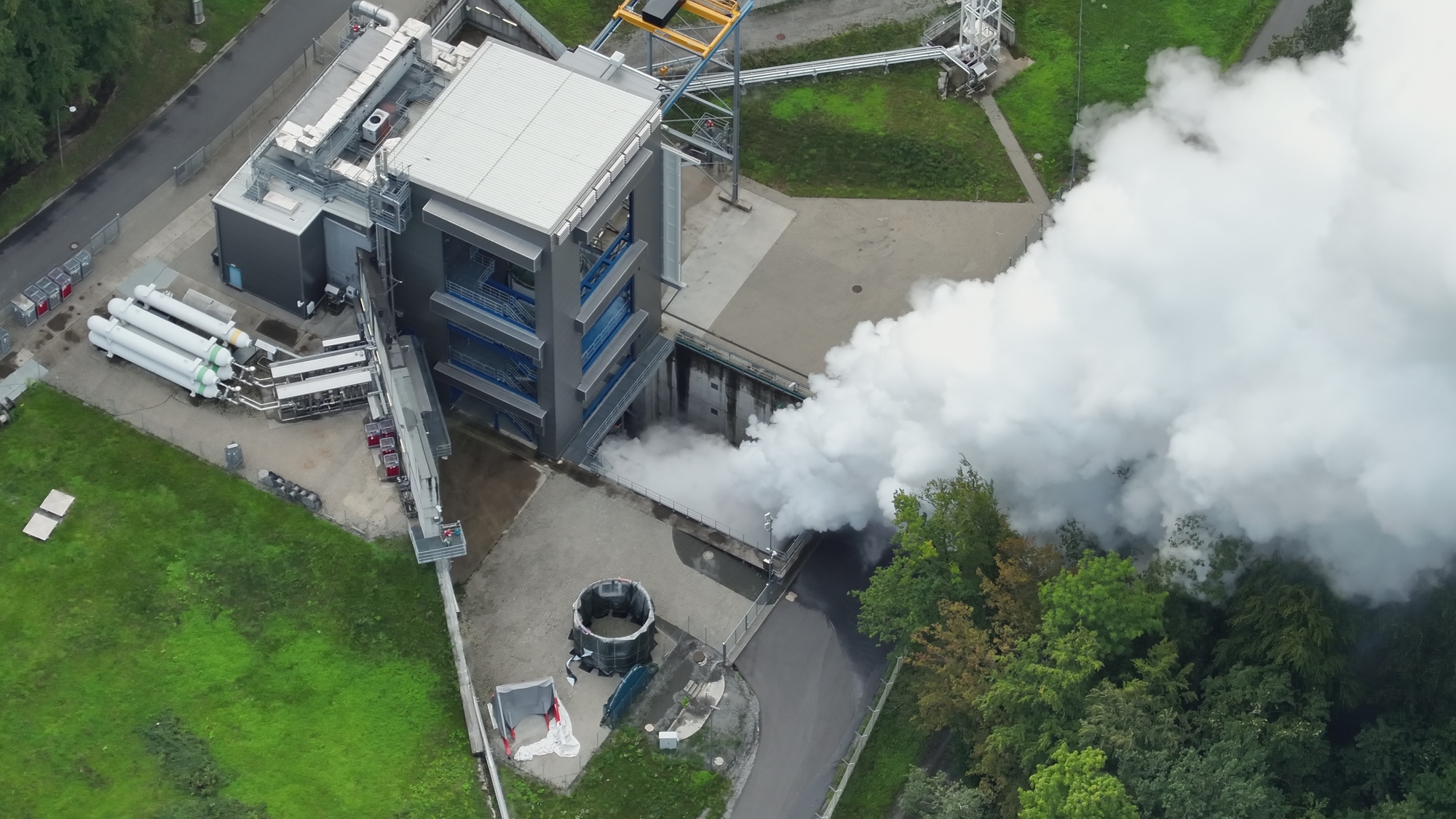Products You May Like
WASHINGTON — The European Space Agency plans to set a target launch period for the first Ariane 6 in October, with the hopes that vehicle can finally take flight “not too late” into 2024.
At a Sept. 4 briefing, officials from ESA and other partners on the Ariane 6 said they should be able to announce a range of dates for the rocket’s inaugural launch after a pair of static-fire tests of the rocket’s core stage and its Vulcain 2.1 engine on the launch pad in Kourou, French Guiana.
The first of those tests, slated to last about four seconds, is scheduled for Sept. 5. That will be followed by a 470-second test on Oct. 3 that, if successful, will provide what ESA calls “flight-ready” qualification for the core stage.
Those tests, said ESA Director General Josef Aschbacher, should allow the agency to set a target for the first launch, which ESA acknowledged last month had slipped to 2024. “We will then be in a position to define a launch period for Ariane 6, which we will announce to you after these series of tests have been conducted.”
Aschbacher declined to speculate when asked if that first launch will take place in the first half of 2024 if those tests go as planned. “We are on a good track. We have stabilized the schedule. The tests are looking really good,” he said. “I think the chances, if everything goes perfect, are pretty good that it’s not too late in the next year, but there are still a lot of unknowns ahead of us.”
Those tests have not always gone perfectly. The four-second static-fire test was originally scheduled for July, but scrubbed for technical issues as well as a lack of liquid oxygen as the countdown was delayed. That test was rescheduled for Aug. 29 but again postponed after what ESA described as a “technical issue affecting the control bench” that handles propellant loading and the automated countdown.
At the briefing, Carine Leveau, director of space transportation at the French space agency CNES, said there was no “clear technical issue” that postponed the test. “We needed more time to be sure that everything was well-prepared, in particular concerning the control bench,” she said. “Today, everything is OK and clearly explained, so we are go to perform the chronology tomorrow.”
The program, though, did celebrate a successful static-fire test of the Ariane 6’s Vinci upper stage engine Sept. 1 at a facility in Lampoldshausen, Germany, operated by the German aerospace agency DLR. The test, which also involved the upper stage’s auxiliary power unit, confirmed the upper stage’s performance on a nominal flight.
“If that had been a flight, this phase of the flight would have been successful,” said Martin Sion, chief executive of ArianeGroup, prime contractor for the Ariane 6.
A final static-fire test of the upper stage is planned for this fall, again at Lampoldshausen, to test the performance of the stage in “degraded” conditions and other mission profiles. “I don’t think there will be a difficulty to make this test in due time,” Sion said, noting that the test was needed to demonstrate the reliability of the vehicle.
The successful upper stage test was proof of the “versatility of the Ariane 6,” including the ability to restart the upper stage, said Stéphane Israël, chief executive of Arianespace. “What has been demonstrated is very convincing for what we will have to do for our customers.”
Arianespace has 28 Ariane 6 launches in its order book, with the largest single customer being Amazon, which ordered 18 launches for its Project Kuiper constellation. Amazon is facing a July 2026 deadline as part of its Federal Communications Commission license to launch half of its 3,236 satellites using the Ariane 6 along with Blue Origin’s New Glenn and United Launch Alliance’s Vulcan Centaur, none of which have yet to launch.
“The dialogue with Amazon is an outstanding dialogue,” Israël said of discussions with the company on its launch plans.
The cost of Ariane 6 development remains at approximately 4 billion euros ($4.3 billion). “At the moment the cost is contained,” said Toni Tolker-Nielsen, ESA’s director of space transportation. That cost estimate, he added, includes 20% margin for contingencies that has not yet been exceeded.
Sion, though, said that the delays in Ariane 6 “have created very significant costs borne by ArianeGroup,” but did not elaborate.
Vega C update
While the Sept. 4 briefing was primarily devoted to the status of the Ariane 6, ESA did provide an update on the Vega C small launch vehicle, which has been grounded since a December 2022 launch failure. Its return-to-flight plans suffered a setback in June when the Zefiro 40 second-stage motor, the cause of the December launch failure, suffered an “anomaly” during a static-fire test.
An independent inquiry board is continuing to investigate the anomaly, Aschbacher said, with its final report is expected before the end of September. “It’s too early now to say something on the root cause.”
In the meantime, Arianespace is moving ahead with a launch of the original version of Vega, which does not use the Zefiro 40 motor. Arianespace announced Aug. 31 it has scheduled a Vega launch for Oct. 4 carrying the THEOS-2 Earth observation satellite for Thailand and the FORMOSAT-7R/Triton satellite for the Taiwanese Space Agency to collect radio occultation data for meteorology. The rocket will also carry 10 secondary payloads.
